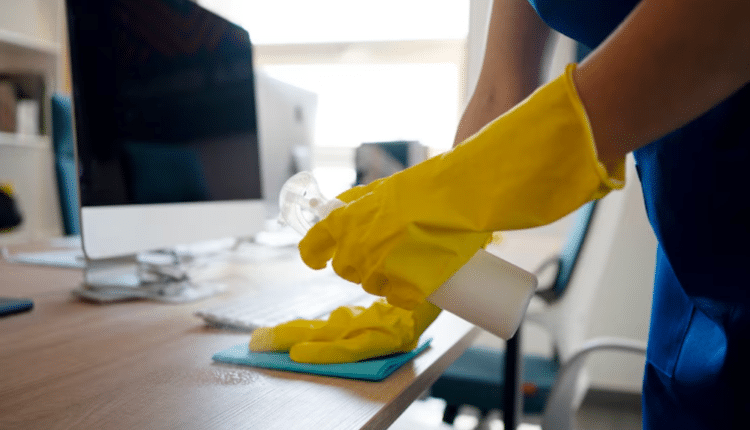How to Make Cleaning Cheaper and Still Get Great Results
In today’s fast-paced work environment, maintaining a clean space isn’t just about appearances—it’s essential for productivity, employee health, and client perception. Yet, many businesses struggle with balancing cleanliness and cost. The good news? You don’t need to break the bank to achieve a spotless environment.
With strategic choices and a little insider knowledge, companies can cut their cleaning expenses while still maintaining top-tier results. The key lies in knowing where to trim, where to invest, and how to evaluate results critically.
Rethink the Cleaning Schedule
One of the biggest misconceptions about cleaning is the belief that more frequent service automatically means better cleanliness. That’s not always true. Often, optimizing the schedule—rather than increasing it—can yield the same results for less money.
Take, for example, high-traffic areas like lobbies or restrooms. These spaces might require daily attention. But a low-traffic conference room? It may only need weekly upkeep. By reassessing which areas need frequent cleaning and which don’t, businesses can reallocate resources effectively.
A 2022 report from the British Institute of Cleaning Science (BICSc) found that schedule optimization saved businesses up to 25% annually on cleaning contracts without compromising hygiene standards.
Invest in High-Quality Products and Equipment

It sounds counterintuitive: spending more upfront to save long-term. But professional-grade cleaning tools and concentrated eco-friendly products can reduce time and frequency needed to clean effectively.
Microfiber cloths, for example, are proven to remove more bacteria than standard cotton rags and last significantly longer. According to a study by the University of California, Davis, microfiber mop systems reduced chemical usage by 95% and water use by 90% compared to traditional mops. Better tools mean fewer hours spent scrubbing and fewer chemicals purchased—two areas where office cleaning charges often accumulate unnecessarily. The efficiency boost allows businesses to negotiate contracts based on outcome rather than man-hours, which is usually more economical.
Train In-House Staff for Daily Maintenance
Even if you outsource major cleaning tasks, basic upkeep by internal staff can prevent messes from escalating. Tasks like wiping down shared surfaces or restocking supplies daily can delay the need for a full deep-clean.
Facilities with an engaged workforce that understands the basics of cleanliness save more in the long run. A report by ISS Facility Services found that companies that incorporated light cleaning duties into daily staff routines reduced their cleaning contract costs by up to 18%.
This isn’t about asking employees to do janitorial work—it’s about fostering shared responsibility. It also helps maintain health standards in between formal cleanings, especially during cold and flu season.
Choose Smart Service Bundles
Bundling cleaning services—like floor care, window washing, and waste removal—under a single provider can reduce overhead costs. This approach often comes with bulk discounts, fewer scheduling conflicts, and more accountability.
Many commercial cleaning providers now offer flexible packages, allowing clients to select only the services they need. But beware of “bundle inflation,” where companies sneak in services that don’t apply to your building’s needs. A thorough line-by-line review of service proposals is essential before signing any agreement.
Providers who specialize in specific industries—such as healthcare or education—may also offer better pricing due to their streamlined processes. These companies are familiar with strict regulatory standards and know how to meet them efficiently.
Monitor and Measure Results, Not Time
Traditional cleaning contracts are often based on labor hours. But time-based billing doesn’t always reflect results. A two-hour cleaning session by an efficient team could outperform a four-hour job done poorly.
Instead, seek performance-based contracts that outline clear deliverables, like “floors free of debris” or “dust-free vents.” These results-oriented models incentivize cleaners to work smarter, not longer. Some forward-thinking firms even use ATP (adenosine triphosphate) testing to scientifically verify cleanliness.
In the long term, this results-first approach leads to better standards and fewer disputes over billing.
Go Green to Save Green
Sustainable cleaning practices aren’t just for the environmentally conscious—they can also significantly cut costs.
Switching to concentrated green cleaning solutions reduces packaging and shipping expenses. Using refillable dispensers slashes plastic waste and purchase frequency. Some products are even designed for multipurpose use, eliminating the need for a separate cleaner for every surface type.
Energy-efficient vacuums and battery-operated scrubbers use less electricity and often last longer, reducing replacement costs. And as a bonus, green cleaning practices are increasingly favored by clients and customers, especially in industries like hospitality or retail.
A 2021 report by Green Seal revealed that businesses adopting green cleaning protocols saved an average of 21% annually due to lower product consumption and reduced waste disposal costs.
Ask for Transparent Pricing
Lack of transparency is one of the most common complaints when it comes to office cleaning charges. Businesses often receive broad estimates with little clarity on what’s included. This lack of detail can lead to bloated invoices filled with hidden costs.
Reputable cleaning companies should provide clear itemized quotes, highlighting service frequency, scope of work, supplies included, and contingencies for emergencies. If a provider resists transparency, consider it a red flag.
Always ask for quotes from at least three providers. This allows for meaningful comparisons and gives leverage during negotiations. Also, beware of “too good to be true” pricing—it often signals corner-cutting or unexpected charges down the line.
Leverage Technology
Cleaning may be a manual task, but technology has started playing a transformative role. From automated scrubbers and robot vacuums to digital inspection tools, tech-savvy cleaning services offer better precision and efficiency.
Apps that allow real-time reporting and quality checks are now common in larger cleaning companies. These tools help identify problem areas, streamline communication, and track compliance—all of which ultimately save time and money.
Companies like CleanTelligent and Swept offer software solutions that help both clients and cleaners stay on top of performance, schedules, and feedback.
Know When to Bring in the Pros
Despite best efforts to economize, there are times when outsourcing to professionals is unavoidable—especially during crises like floods, contamination, or unexpected events.
In such cases, emergency commercial cleaning services step in with the necessary tools, training, and response speed to handle time-sensitive issues. These services are designed to manage biohazards, post-construction debris, or fire and water damage, preventing further deterioration or compliance violations.
The Centers for Disease Control and Prevention (CDC) emphasized the need for prompt cleaning in shared commercial spaces during the COVID-19 pandemic. Businesses that delayed emergency cleanups often faced operational shutdowns and reputational harm.
The key takeaway? Routine savings should never compromise emergency readiness. Have a vetted cleaning vendor on standby who can respond immediately when the unexpected hits.
Build Long-Term Partnerships
Finally, don’t underestimate the power of strong vendor relationships. Consistent collaboration leads to mutual trust, better deals, and personalized service.
Long-term contracts—when carefully negotiated—can yield pricing incentives and ensure that cleaners become familiar with your specific space and standards. Providers who understand your facility’s quirks are less likely to miss spots or cause disruptions.
Some cleaning firms even offer quarterly performance reviews, which can help identify potential improvements and optimize costs over time.
Final Thoughts
Making cleaning cheaper doesn’t mean settling for mediocre results. In fact, with the right strategy, you can elevate your cleanliness standards while trimming expenses. From smarter contracts and better tools to leveraging staff and being tech-forward, the possibilities for efficiency are abundant.
Remember, cleanliness isn’t a cost center—it’s an investment in health, professionalism, and operational excellence.


